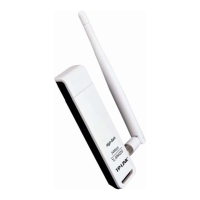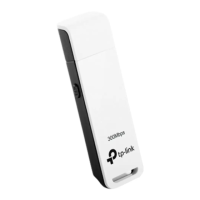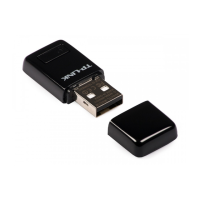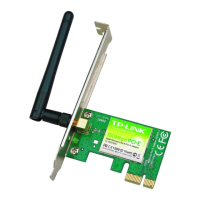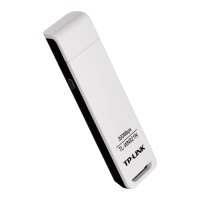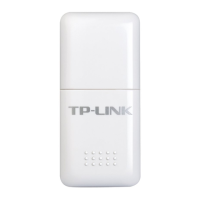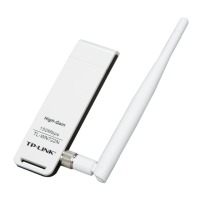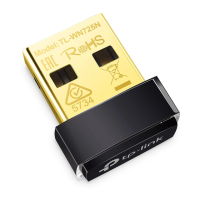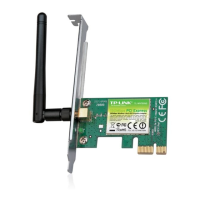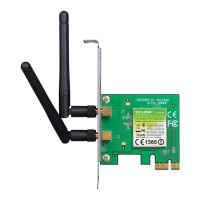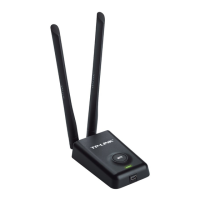TL-WN422G High-Gain Wireless USB Adapter User Guide
34
¾ - The 802.11b standard specifies a wireless product networking at 11 Mbps using
direct-sequence spread-spectrum (DSSS) technology and operating in the unlicensed radio
at 2.4GHz, and security. 802.11b networks are also referred to
tworks.
¾ ication ing direct-sequence
spread-spectrum (DSSS) technology, using OFDM modulation and operating in the
pectrum ard compatibility with IEEE 802.11b devices,
and WEP encryption for s
¾ work - An ad f computers, each with a Wireless Adapter,
s an indepen wireless LAN. Ad-hoc wireless computers operate on a
ch other without the use of an access point.
re ependent Basic Service Set (IBSS) or as
ode, and is ation.
¾ Sequence - DSSS generates a redundant bit pattern for all
his bit ven if one or more bits
ed d ed in the receiver
inal d t the need of retransmission. To an unintended receiver,
DSSS appears as low power wideband noise and is rejected (ignored) by most narrowband
receivers. However, to an intended receiver (i.e. another wireless LAN endpoint), the DSSS
valid signal, and interference is inherently rejected (ignored).
¾ cy Hop SS continuously changes (hops) the
cy of a per second according to a
els. Because a fixed frequency is not used, and only the
r and receiver k of FHSS is extremely difficult.
Infrastructure Network - An infrastructure network is a group of computers or other devices,
each with a Wireless Adapter, connected as an 802.11 wireless LAN. In infrastructure mode,
the wireless devices communicate with each other and to a wired network by first going
through an access point. An infrastructure wireless network connected to a wired network is
referred to as a Basic Service Set (BSS). A set of two or more BSS in a single network is
referred to as an Extended Service Set (ESS). Infrastructure mode is useful at a corporation
scale, or when it is necessary to connect the wired and wireless networks.
¾ Spread Spectrum - Spread Spectrum technology is a wideband radio frequency technique
developed by the military for use in reliable, secure, mission-critical communications systems.
It is designed to trade off bandwidth efficiency for reliability, integrity, and security. In other
words, more bandwidth is consumed than in the case of narrowband transmission, but the
trade off produces a signal that is, in effect, louder and thus easier to detect, provided that the
receiver knows the parameters of the spread-spectrum signal being broadcast. If a receiver is
not tuned to the right frequency, a spread-spectrum signal looks like background noise.
There are two main alternatives, Direct Sequence Spread Spectrum (DSSS) and Frequency
Appendix B: Glossary
802.11b
spectrum WEP encryption for
as Wi-Fi ne
802.11g - specif for wireless networking at 54 Mbps us
unlicensed radio s at 2.4GHz, and backw
ecurity.
Ad-hoc Net
connected a
-hoc network is a group o
dent 802.11
peer-to-peer basis, communicating dir
Ad-hoc mode is also
ectly with ea
ferred to as an Ind
peer-to-peer m useful at a departmental scale or SOHO oper
DSSS - (Direct- Spread Spectrum)
data transmitted. T
in the chip are damag
pattern is called a chip (or chipping code). E
uring transmission, statistical techniques embedd
can recover the orig ata withou
signal is recognized as the only
FHSS - (Frequen ping Spread Spectrum) - FH
carrier frequen
pseudo-random set of chann
conventional carrier several times
transmitte now the hop patterns, interception
¾
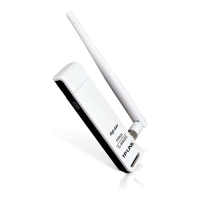
